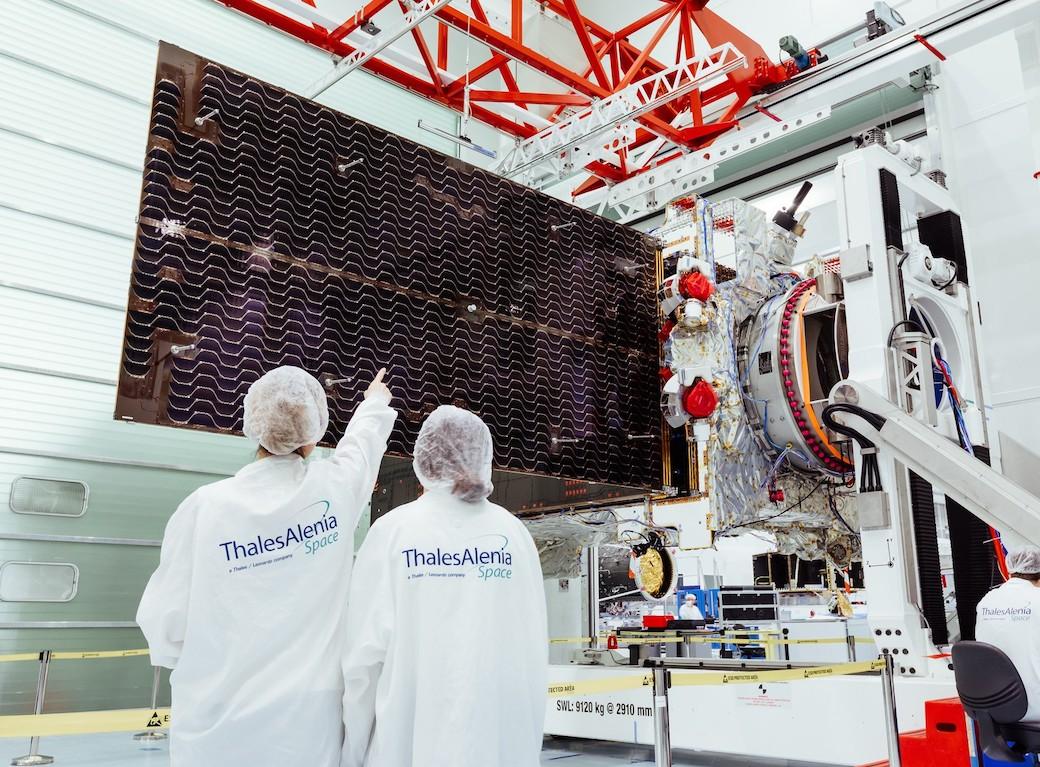
CANNES, France—Thales Alenia Space has matured technologies and production processes for its Spacebus Neo all-electric telecommunications satellite platform, to maintain competitiveness with low-Earth-orbit constellations.
A SpaceX Falcon 9 is planned to launch Indonesia’s Satria—the seventh spacecraft using the Spacebus Neo—into geostationary transfer orbit this summer. Common modules make design and assembly easier, while leaving room for customization.
The Indonesian government did not want any unproven technology, says Marc Courbin, Thales Alenia Space’s Satria program manager.
The first Spacebus Neo was launched in 2020, a few months before Thales Alenia Space signed a contract with operator SNT, a single-purpose vehicle created for Indonesia’s PSN internet provider. That country’s government will buy services from SNT.
Satria is using the fifth generation of Thales Alenia Space’s digital transparent processor, which can quickly adapt traffic to the needs of the moment.
“Think of it as a giant hub,” says Cyril Baud, who is responsible for Satria’s assembly, integration and testing at Thales Alenia Space’s manufacturing facility here. Moreover, for weight reduction, the number of parts produced with additive-manufacturing techniques (in aluminum or titanium) has increased, Courbin says.
The satellite will distribute 150 Gbps in Ka-band over 116 user spot beams. PSN’s mission is to provide schools and other national infrastructure in rural areas and remote places with broadband internet, says Nia Asmady, PSN’s satellite project manager. The number of “service points” in the archipelago expected to benefit from Satria is targeted at 150,000, she notes.
For the Spacebus Neo family, the production cycle has been shortened faster than planned thanks to a swift learning curve, Courbin says. It now stands at two years, down from five years for a more conventional design, he emphasizes.
Satria will be operational in orbit late this year, for a life expectancy of 15 years. It weighs 4.6 metric tons (10,100 lb.) in launch configuration with a full load of xenon in the electric propulsion system’s tanks. It is 7.6 m (22 ft.) high, and its solar array is 44 m long. The satellite is undergoing the final phases of testing before being shipped to Cape Canaveral for launch.
The program is worth €540 million ($587 million) including the ground segment—which Thales Alenia Space partly supplies—and financing, Asmady says. Relying on a low-Earth-orbit constellation would have been too expensive and ground antennas too complex for Indonesia’s use case, she explains. Use of a geostationary satellite thus was found to be the most cost-effective option.
View all news, analysis and insight related to Space Symposium 2023
